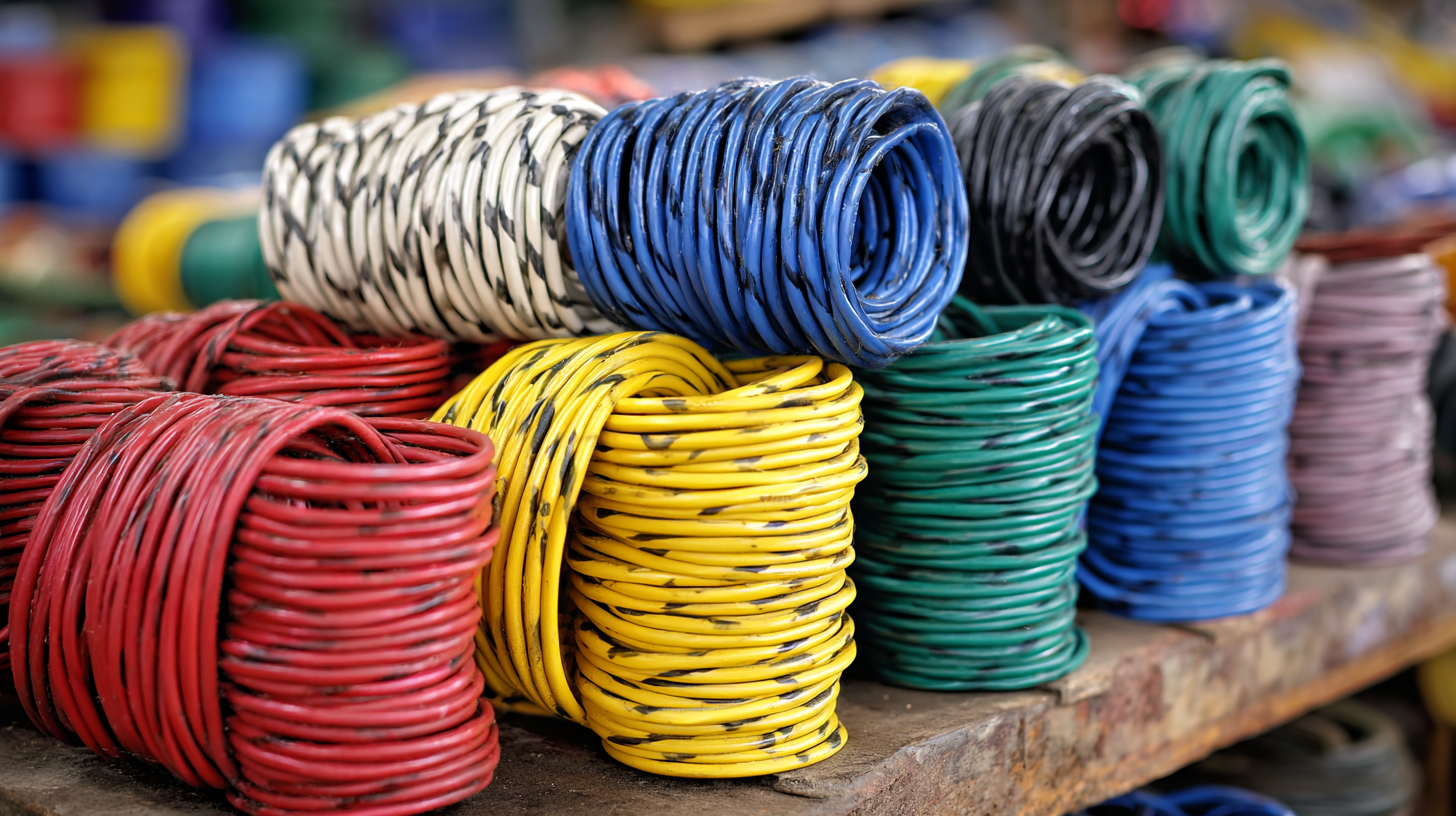When embarking on any electrical project, selecting the appropriate Electrical Cable is crucial for ensuring safety, efficiency, and long-term reliability. According to a report by MarketsandMarkets, the global market for electrical cables is projected to reach USD 225.1 billion by 2024, driven by increasing investments in infrastructure and renewable energy sources. With countless options available, navigating the complexities of cable types, materials, and specifications can be daunting for both professionals and DIY enthusiasts. Understanding the different characteristics of electrical cables, including their insulation, conductor types, and voltage ratings, is essential in making informed decisions. This blog will provide you with seven proven tips to help you choose the best electrical cable for your specific project, ensuring that you meet both regulatory requirements and performance expectations while minimizing risks associated with improper electrical installations.

 When selecting the best electrical cable for your project, it's crucial to understand the different types of cables available and their specific applications.
For instance, the high-temperature superconducting (HTS) cables have recently gained attention due to their ability to transmit large amounts of power with minimal energy loss.
This is particularly beneficial in urban distribution grids, where space is limited and efficiency is paramount. The latest advancements in HTS technology indicate its potential to revolutionize power distribution by enhancing capacity while reducing environmental impacts.
When selecting the best electrical cable for your project, it's crucial to understand the different types of cables available and their specific applications.
For instance, the high-temperature superconducting (HTS) cables have recently gained attention due to their ability to transmit large amounts of power with minimal energy loss.
This is particularly beneficial in urban distribution grids, where space is limited and efficiency is paramount. The latest advancements in HTS technology indicate its potential to revolutionize power distribution by enhancing capacity while reducing environmental impacts.
Another significant consideration is the ongoing dilemma of recycling electrical cables.
Current challenges in recycling methods highlight the importance of choosing cables with end-of-life considerations in mind.
Industry reports suggest that innovative separation technologies are being developed to recover materials from thin end-of-life cables more effectively, addressing both environmental concerns and material scarcity.
Furthermore, advancements in cable construction, such as the use of nanocomposites for insulation, show promise for improving cable performance and resistance to aging, thereby extending their lifespan and reliability in various applications.
Understanding these trends ensures that you not only select the right cable for immediate needs but also promote sustainable practices in electrical projects.
When selecting electrical cables for your project, understanding the key factors can significantly impact both efficiency and safety. One important consideration is the cable's intended use. Different applications may require specific cable types, such as those suited for high-voltage environments or those resistant to moisture and environmental wear. Additionally, evaluating the cable's current-carrying capacity is crucial, as it directly affects performance and risk management.
Another vital aspect is insulation material. The choice of insulation affects how well the cable can handle temperature variations and exposure to chemicals. It's essential to select materials that meet your project's environmental requirements and safety regulations. Furthermore, consider the cable length and installation requirements to avoid complications during setup, ensuring a seamless integration into your electrical system. By focusing on these key factors, you can choose the best electrical cable tailored to your project's needs, ultimately ensuring reliability and longevity in performance.
When embarking on an electrical project, selecting the right cable gauge is critical to ensure safety and efficiency. The gauge of the cable determines its ability to carry current, with lower gauge numbers indicating thicker wires. A good starting point is to assess the load requirements of your specific application. For instance, a 12-gauge wire is typically adequate for most residential circuits, while heavier applications might require 10-gauge or even thicker cables.
Another essential tip is to consider the length of the run. Longer distances can lead to voltage drop, which means you might need to choose a thicker gauge cable to compensate for this loss. It’s recommended to use a voltage drop calculator to determine if the gauge is suitable for your distance and load. Always err on the side of caution and select a cable that can handle more than your calculated needs, as this provides an extra layer of safety and efficiency for your electrical system.
 When selecting electrical cables for any project, evaluating safety standards and certifications is paramount. Different regions and countries have specific regulations that dictate the quality and safety of electrical products. For instance, in the United States, cables may need to meet National Electrical Code (NEC) requirements, while in Europe, compliance with the International Electrotechnical Commission (IEC) standards is essential. Prioritizing cables that adhere to recognized safety standards not only ensures compliance with local laws but also enhances the overall safety of your electrical installations.
When selecting electrical cables for any project, evaluating safety standards and certifications is paramount. Different regions and countries have specific regulations that dictate the quality and safety of electrical products. For instance, in the United States, cables may need to meet National Electrical Code (NEC) requirements, while in Europe, compliance with the International Electrotechnical Commission (IEC) standards is essential. Prioritizing cables that adhere to recognized safety standards not only ensures compliance with local laws but also enhances the overall safety of your electrical installations.
Certifications such as UL (Underwriters Laboratories), CE (Conformité Européenne), and CSA (Canadian Standards Association) play a crucial role in identifying reliable electrical cables. These certifications indicate that the cables have undergone rigorous testing for safety, performance, and environmental impact. It's essential to scrutinize the documentation provided by manufacturers to confirm these certifications. By investing in cables with valid safety certifications, you can mitigate the risks of electrical hazards, reduce fire risks, and ensure a longer lifespan for your installation, ultimately leading to a safer and more trustworthy electrical system.
When embarking on electrical wiring projects, one of the most crucial decisions you’ll face is balancing cost and quality. Often, lower-priced cables may tempt you, but they could lead to issues down the line. Choosing high-quality materials not only enhances safety but also ensures longevity, reducing the frequency of replacements. To make informed decisions, consider these tips: always check for certifications such as UL or CSA to ensure compliance with safety standards.
Another critical aspect is understanding the specific requirements of your project. Different applications may require different types of cables, such as THHN for general wiring or NM-B for indoor use. Be mindful of the ampacity ratings and environmental conditions when selecting your cables. Alongside, don’t overlook the importance of vendor reputation. Purchasing from reputable suppliers can offer peace of mind about the quality, ensuring you’re investing in a product that meets your needs without compromising safety.
